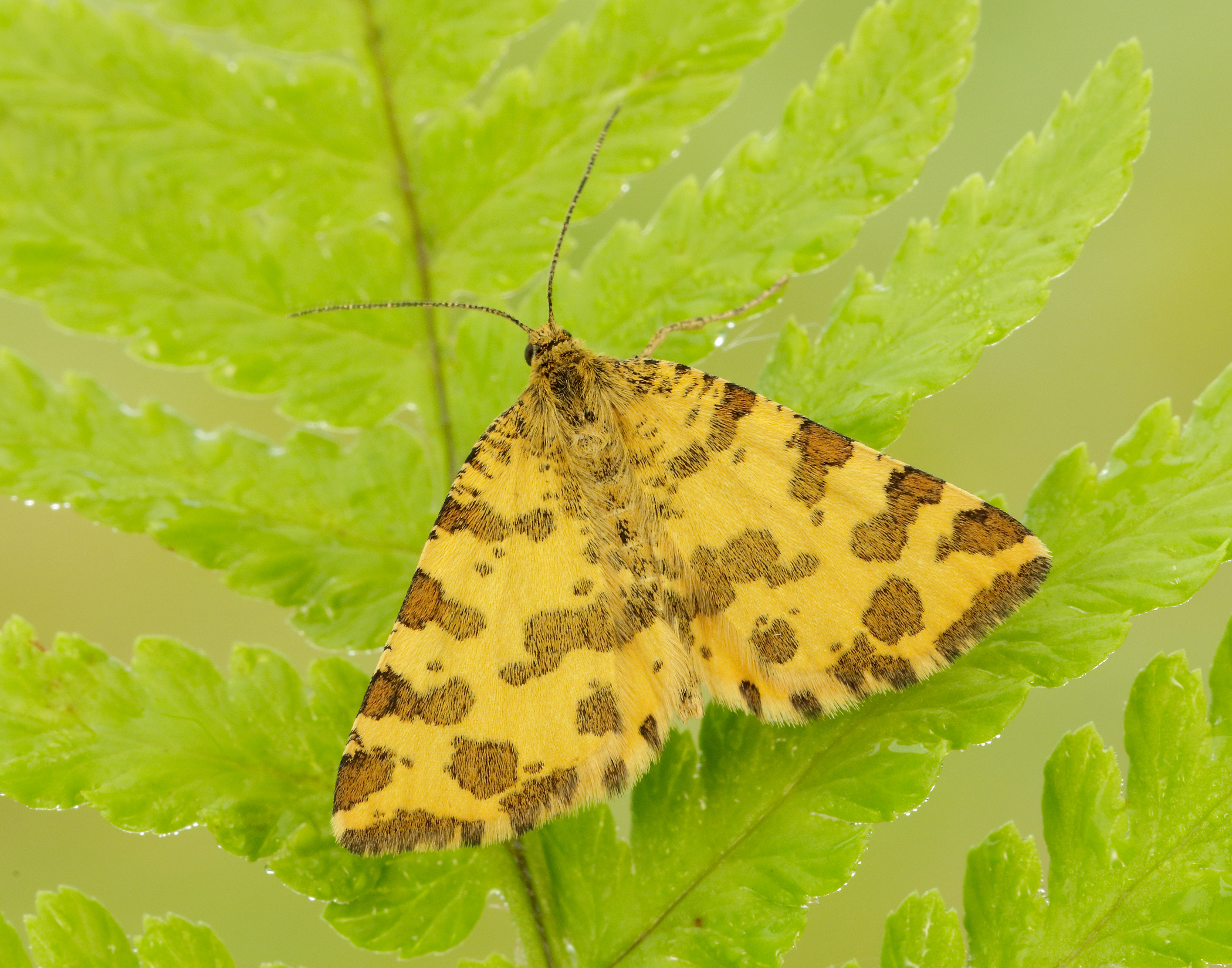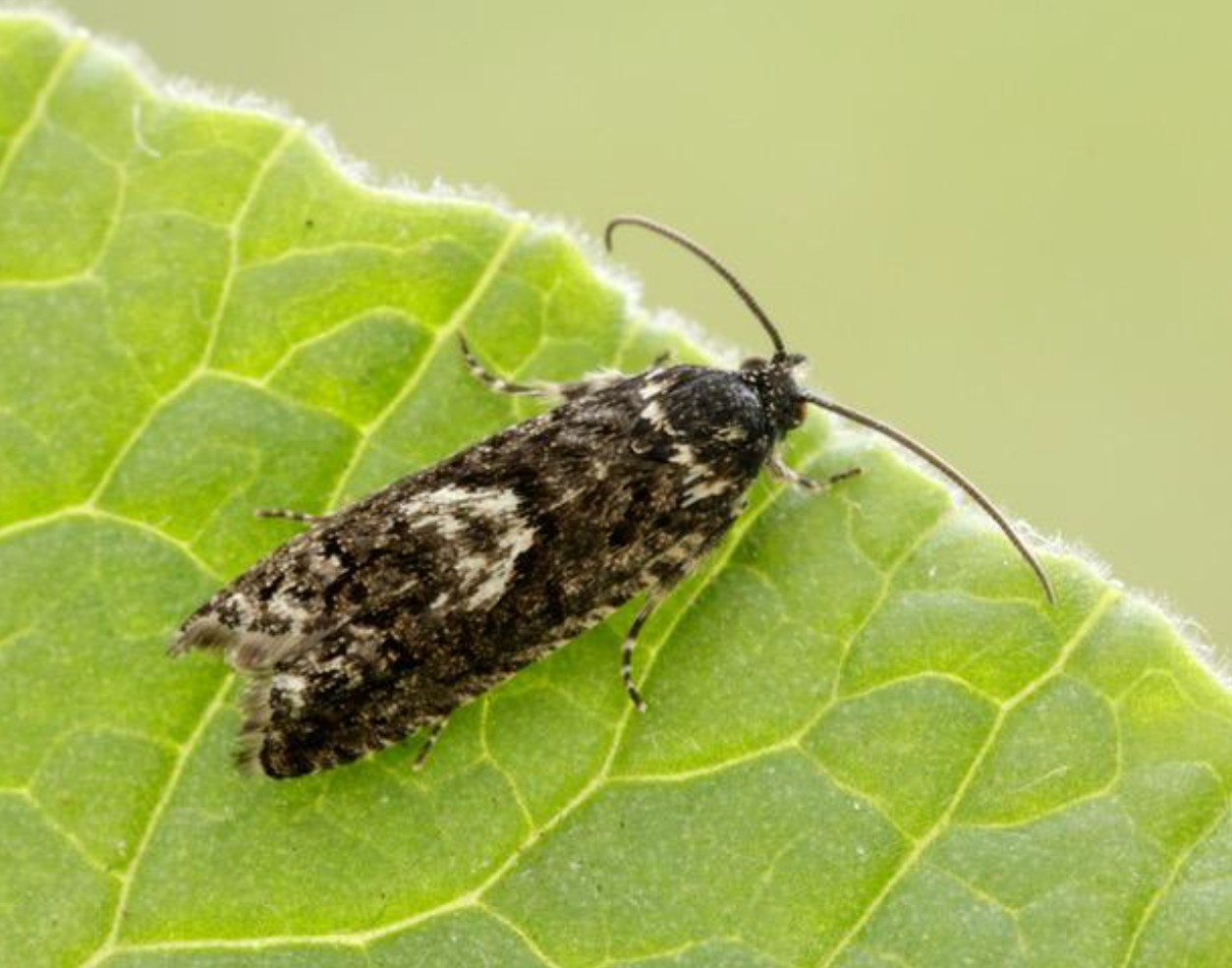The December Moth reaches its peak about now although individuals have emerged in October and others will continue into December. It is in the same family, Lasiocampidae, as the Fox moth, Northern Eggar and Drinker which emerge from early in the year through to summer. As the December Moth flies so late it passes the winter as an egg cemented to the twigs of a wide range of deciduous trees. The male moths, seen above, have relatively short wings and very large, feathery antennae used to track down the females. These are larger with longer, thinly scaled wings. As with other members of the family the adult moths do not feed and readily come to light.
This is a common moth throughout the UK and occurs across mainland Scotland although its presence in upland areas might be under-recorded given the poor weather at this time of year. Within D&G we have over 500 records from all three vice-counties.
The caterpillars generally have a bluish-grey body with greenish tinges. The whole body is covered in grey hairs with the lower ones helping to hide the legs and the shadow from the body from searching birds. Lying along the twig the caterpillar is very cryptically coloured and blends in with the bark during the day. Another form is found which is much more boldly marked with yellow, white and black adapted to match the lichens covering the twigs. A whole range of trees can act as the food plant including oak, birch, elm, hawthorn and blackthorn. The eggs hatch in April and are fully grown by late June. The mature caterpillars pupate in a tough cocoon on the tree under loose bark or on the ground.




